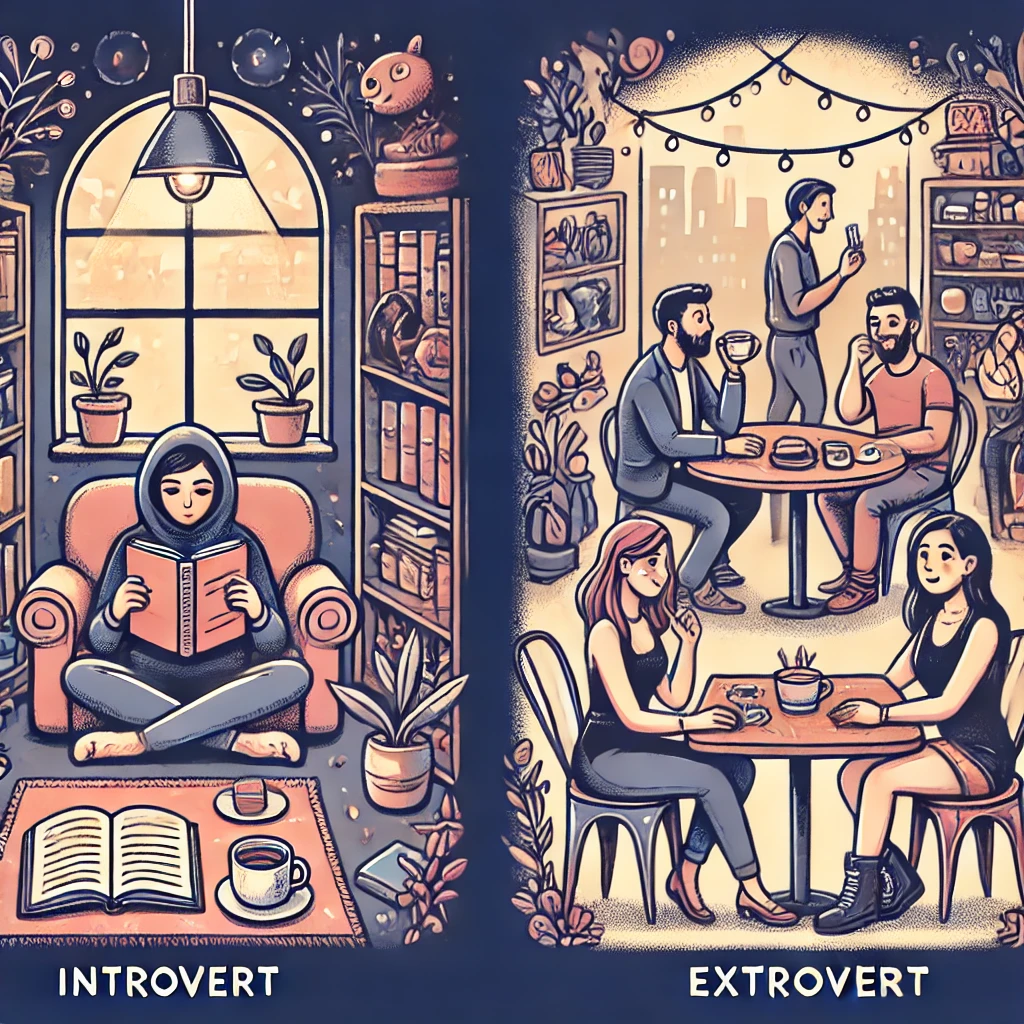Introduction: Understanding Personality Types
Human personalities are complex and unique, yet psychologists have broadly categorized people into two main types: introverts and extroverts. While these labels are often used casually, they stem from deep-rooted psychological theories, primarily introduced by Carl Jung. The way individuals recharge their energy and engage with others varies significantly between these two personality types. Understanding these differences can improve personal relationships, workplace dynamics, and social interactions.
What Defines an Introvert?
An introvert is someone who gains energy from solitude and prefers deep, meaningful conversations over small talk. Introverts tend to feel drained after prolonged social interactions and require time alone to recharge. This does not mean that introverts dislike people; rather, they simply process social experiences differently.
Key Traits of Introverts:
- Prefer solitary activities or small group interactions.
- Feel mentally exhausted after extended socializing.
- Enjoy deep conversations over casual chit-chat.
- Think before speaking, often valuing reflection.
- Thrive in quiet and low-stimulation environments.
What Defines an Extrovert?
On the other hand, extroverts thrive on social interaction. They feel energized when engaging with others and often seek out dynamic, lively environments. Extroverts are more comfortable in large social settings, where they can interact with multiple people at once.
Key Traits of Extroverts:
- Feel energized by being around people and engaging in social events.
- Prefer group activities over solo tasks.
- Are comfortable with spontaneity and fast-paced interactions.
- Enjoy engaging in lighthearted or casual conversations.
- Tend to process thoughts externally by discussing them with others.
How Introverts and Extroverts Recharge
One of the biggest differences between introverts and extroverts is how they restore their mental energy. This is often where misunderstandings arise in relationships, workplaces, and friendships.
How Introverts Recharge:
- Spending time alone, reading, or engaging in hobbies.
- Reflecting on personal thoughts and experiences in solitude.
- Engaging in quiet activities like meditation, journaling, or art.
- Having deep, one-on-one conversations rather than large group discussions.
How Extroverts Recharge:
- Socializing with friends, attending events, or participating in group activities.
- Engaging in stimulating conversations to process their thoughts.
- Seeking external feedback and social affirmation.
- Thriving in fast-paced environments such as parties or networking events.
Social Connections: How They Differ
Both introverts and extroverts form deep and meaningful relationships, but the way they approach social connections differs significantly.
Introverts in Social Settings:
- Prefer a few close relationships rather than a large social circle.
- Feel overwhelmed in large crowds or highly stimulating environments.
- Take time to warm up to new people but build strong, long-term bonds.
- Tend to listen more than they speak, carefully choosing their words.
Extroverts in Social Settings:
- Enjoy meeting new people and expanding their social networks.
- Feel comfortable in group settings, often taking the lead in conversations.
- Engage in social activities frequently to maintain energy levels.
- Are more likely to enjoy spontaneous meetups and events.
Misconceptions About Introverts and Extroverts
There are several common misconceptions about both personality types that lead to misunderstandings.
Myths About Introverts:
- They are shy. In reality, many introverts are confident and articulate; they simply prefer quiet settings.
- They dislike people. Introverts enjoy deep connections but in smaller, more intimate settings.
- They don’t like to talk. They do, but usually about topics that are meaningful to them.
Myths About Extroverts:
- They are always outgoing. While extroverts enjoy socializing, they also have moments of solitude and introspection.
- They don’t experience loneliness. Extroverts can feel lonely if they lack deep, meaningful relationships.
- They are not good listeners. Many extroverts are excellent listeners and thrive on active engagement in discussions.
Finding Balance Between the Two
No one is purely introverted or extroverted; instead, most people exist on a spectrum, with qualities of both personality types. The key to personal and professional success is recognizing these traits and balancing them effectively.
Tips for Introverts:
- Allow yourself time to recharge after social events.
- Set boundaries to avoid social exhaustion.
- Focus on quality over quantity in relationships.
- Communicate your need for solitude to others.
Tips for Extroverts:
- Be mindful of introverts’ need for space and quiet time.
- Balance social activities with moments of self-reflection.
- Develop deep relationships beyond surface-level interactions.
- Recognize when to slow down and recharge without external stimulation.
Conclusion: Embracing Different Energy Styles
Understanding how introverts and extroverts recharge and connect can lead to healthier relationships, better workplace dynamics, and improved self-awareness. Rather than viewing one personality type as better than the other, it’s important to embrace the differences and learn from both approaches. Whether you find energy in solitude or through socialization, recognizing and respecting these differences can create stronger, more harmonious interactions in all areas of life.
